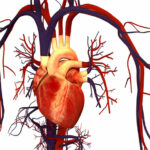Food for Thought
Quench inflammation and protect your heart
The statistics for heart disease are pretty much the same everywhere in the developed world. It’s the biggest killer. Often the cause is atherosclerosis or ‘hardening of the arteries’ which develops slowly and quietly for years until bingo, it suddenly produces the stabbing pain of angina or a heart attack. Today, it’s affecting younger and younger people and the beginnings of blood vessel damage are even being seen in children!
![[HEART]](https://glycemicindex.com/blog/2008/july08/heartattack175.jpg)
Most people are aware of the key diet and lifestyle messages to reduce the likelihood of becoming a heart disease statistic: stopping smoking, getting more exercise and eating a healthy diet – especially cutting back on saturated fats and choosing the good fats. Fewer appreciate that high blood glucose levels are a red flag risk factor for heart disease, too.
A recent review in Current Atherosclerosis Reports that looked at the latest studies of links between blood glucose and heart disease risk found that high blood glucose levels after eating plays a greater role than is generally acknowledged. Dr Scott Dickinson, one of the authors, told GI News that: ‘The present evidence suggests that even non-diabetic levels of high blood glucose levels after meals likely plays a key role in developing atherosclerosis, especially in people with a higher BMI, insulin resistance or impaired glucose tolerance.’
What’s the link between blood glucose and atherosclerosis? Inflammation. For some time now, heart disease researchers have suspected that the blockages in coronary arteries that can lead to a heart attack, aren’t just caused by the build up of cholesterol and other fats, but an inflammatory process in the arteries, similar to what happens when you get a bacterial infection, also plays a part. It’s thought that high blood glucose after meals contributes to chronic low inflammation by increasing oxidative stress (see below).
There’s already considerable evidence that hyperglycemia drives the development of complications of the blood vessels in people with diabetes. But a new study published in the American Journal of Clinical Nutrition suggests that even in healthy, young people, high glucose levels after eating are associated with the kind of oxidative stress that may increase risk of heart disease.
Lead researcher Dr Scott Dickinson explained that they wanted to compare the effects of eating high and low GI carbs on an inflammatory marker called NF-kB that’s part of the body’s defence system against oxidative stress. To do this they gave 10 healthy, lean volunteers ‘meals’ of white bread (GI 70), cooked pasta (GI 35), or a glucose drink (GI 100). They found that the quickly digested white bread had the same capacity to acutely activate NF-kB as the glucose. By contrast, the slowly digested pasta had an almost negligible effect on NF-kB activation. In addition, the changes in NF-kB were on par with changes in blood glucose concentrations which suggests that slower rates of digestion and absorption reduce oxidative stress.
They conclude: ‘our findings are novel and have important implications. High GI carbohydrates including potatoes, wholegrain breads, and many varieties of breads and breakfast cereals dominate modern diets. Although antioxidants and phytonutrients in whole grains may quench free radicals and help to protect cells from oxidative damage, it may be prudent to also reduce the source of oxidative stress (i.e., reduce postprandial hyperglycemia). Longer term studies comparing conventional and low GI diets on the development of both type 2 diabetes and CVD in high-risk groups are warranted.’
What’s oxidative stress?
Your body constantly reacts with oxygen as you breathe and your cells produce energy. As a consequence, highly reactive molecules are produced known as free radicals. Free radicals interact with other molecules within cells and can cause oxidative damage to proteins, membranes and genes. It’s the imbalance between the production of reactive oxygen and a biological system’s ability to readily detoxify the reactive intermediates or easily repair the resulting damage that causes oxidative stress.)



![[BOOK]](https://glycemicindex.com/blog/2008/july08/metabolicheart125.jpg)




